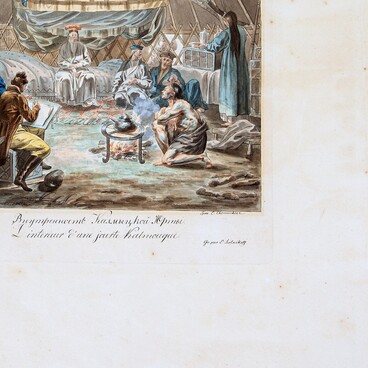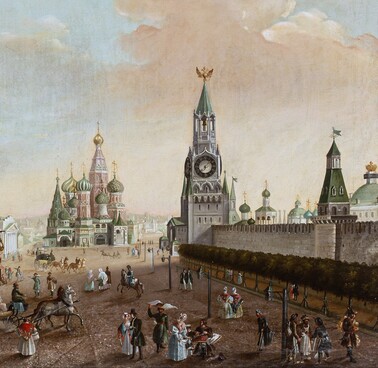The National Pushkin Museum presents a watercolor by an unknown artist, painted from the original by Fyodor Alekseyev. The watercolor depicts Strastnaya Square in Moscow as it was in the early 19th century.
From the late 16th century, the Tversky Gate of the Bely Gorod was located on the square, through which the road to Tver and Veliky Novgorod passed. A church was erected at the gate in honor of the Icon of the Mother of God of the Passion. In 1654, a convent also in honor of the icon was established there. In 1720, the Tversky Gate was demolished, and a year later a triumphal arch for the solemn entry of Peter I into Moscow was installed on the newly formed square. It was built to commemorate the end of the Northern War and the Peace Treaty of Nystad. Since then, triumphal arches have been built on the site of the gate for each new coronation.
The watercolor depicts the triumphal arch erected to celebrate the coronation of Paul I. On the left is the Church of Demetrios of Thessaloniki, built in the 1790s on the site of a 1625 stone church. In front of it is a free standing tented-roof bell tower, erected in the mid-17th century. The right part of the composition shows the house of Ekaterina Ivanovna Kozitskaya, nee Myasnikova (1746–1833), built in the late 1780s by the architect Matvey Fyodorovich Kazakov. Subsequently, the house as a dowry of the Kozitsky’s daughter Anna passed to the Russian diplomat Alexander Mikhailovich Beloselsky-Belozersky, who had two daughters from his first marriage, Zinaida and Maria.
Zinaida Alexandrovna, whose married name was
Volkonskaya, settled in her father’s house in 1824. She hosted literary and
musical evenings there, which were attended by Alexander Pushkin, Vasily
Zhukovsky, Pyotr Vyazemsky, Fyodor Tyutchev, Denis Davydov, Alexander Odoevsky,
Alexander Alyabyev and many others. “In Moscow, the house of Princess Zinaida
Volkonskaya was an elegant venue for all the wonderful and remarkable
personalities of modern society, ” Stepan Petrovich Shevyryov recalled. “Representatives of high society, dignitaries and handsome people, young people
and those of a respectable age, people of intellectual labor, professors,
writers, journalists, poets, and artists all assembled here. Everything in this
house bore traces of service to art and thought. There were readings, concerts,
and amateur performances of Italian operas. In the midst of the artists,
leading them, stood the mistress of the house herself.”


